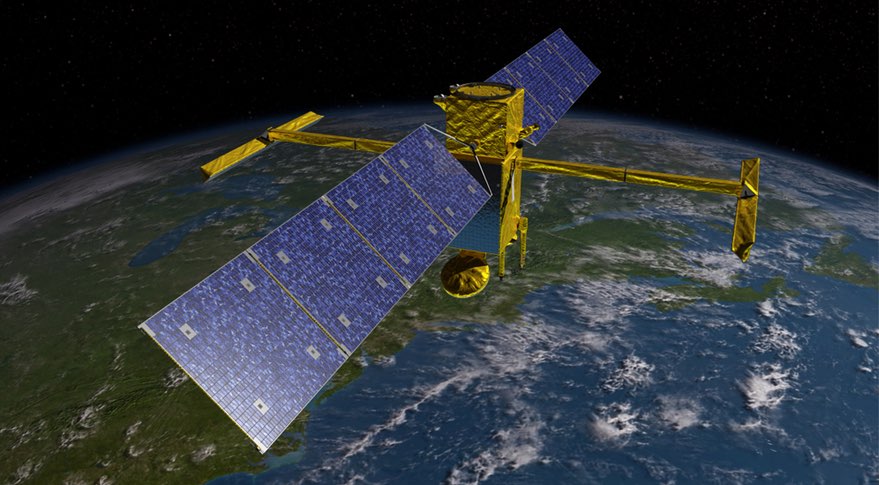
NASA shifts Earth science mission to previously flown Falcon 9 (Image Credit: Space News)
WASHINGTON — NASA’s embrace of reused rockets continued with an agreement this month to switch the upcoming launch of an Earth science satellite from a new to a previously flown Falcon 9, a change whose full terms remain proprietary.
A contract modification published April 6 for the agency’s NASA Launch Services 2 contract with SpaceX changes the upcoming launch of the Surface Water and Ocean Topography (SWOT) satellite from a new Falcon 9 booster to a previously flown own. The contract modification did not explain that change.
SWOT, a mission being developed in partnership with Canada, France and the United Kingdom, will monitor the location and volume of water both in the oceans as well as lakes and rivers, enabling scientists to measure the effects of climate change. The spacecraft, weighing about 2,000 kilograms, is scheduled to launch in November from Vandenberg Space Force Base in California.
NASA selected SpaceX to launch SWOT in November 2016, and at the time the mission was planned for launch in 2021. NASA said then the value of the contract was $112 million, which included the launch service as well as payload processing and integration services and other support. That amount was significantly higher than other Falcon 9 contracts NASA awarded to SpaceX, a difference NASA explained as being linked to the specific requirements of the mission.
Interest in launch vehicle reuse has been primarily driven by a desire to lower costs. However, in the case of SWOT, NASA said it switched to a previously flown booster for schedule assurance.
“From a SWOT perspective, knowing the booster assignment now (primary and back up) reduces overall schedule risk and enables NASA’s Launch Services Program team the opportunity to start performing vehicle insight early to ensure no increased technical risk,” NASA spokesperson Tylar Greene told SpaceNews.
While NASA accepted the use of previously flown boosters on cargo missions to the International Space Station for several years, and with crewed missions starting with Crew-2 in April 2021, the first NASA science mission to launch on a reused booster was its Double Asteroid Redirection Test (DART) mission that launched in November 2021, followed weeks later by the Imaging X-Ray Polarimetry Explorer (IXPE) mission.
“The success by SpaceX with previously flown boosters drove changes to the NASA Launch Services-2 contract that enables NASA to utilize this capability with missions already on contract,” Greene said. “The contract modification was executed after detailed evaluation of SpaceX’s vehicle refurbishment processes and the development of the government insight plan to ensure pre-flown boosters do not increase technical risk to missions.”
The published contract modification did not change the value of the award. “In addition to the schedule benefits, the government received considerations from SpaceX directly benefiting the SWOT mission,” Greene said. “The specific consideration given to NASA for the switch to previously flown boosters is proprietary to SpaceX.”
It’s unclear what sort of consideration SpaceX could offer that could remain proprietary in an unclassified government contract. SpaceX did not respond to questions about the SWOT contract change. The company infrequently responds to media inquiries.
The switch from a new to a reused booster, though, illustrated NASA’s growing acceptance of reused rockets. “Even though I was always excited about utilizing flown @SpaceX boosters on principle and also the impact on mission cost, I have changed my opinion about them slightly: I now PREFER previously used boosters over totally new ones for most science applications,” tweeted Thomas Zurbuchen, NASA associate administrator for science, shortly after the launch of the commercial Ax-1 mission to the ISS April 8, which also used a previously flown booster.








